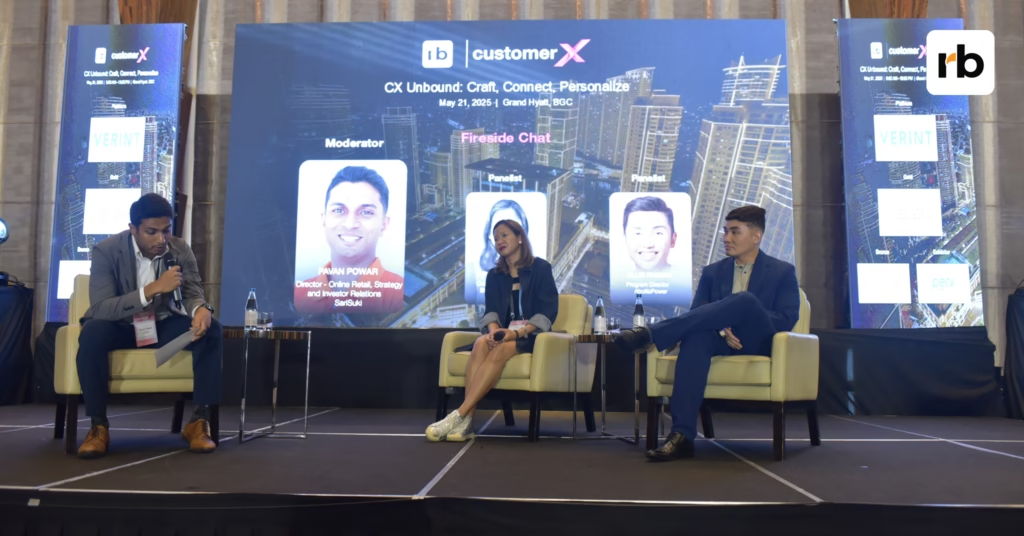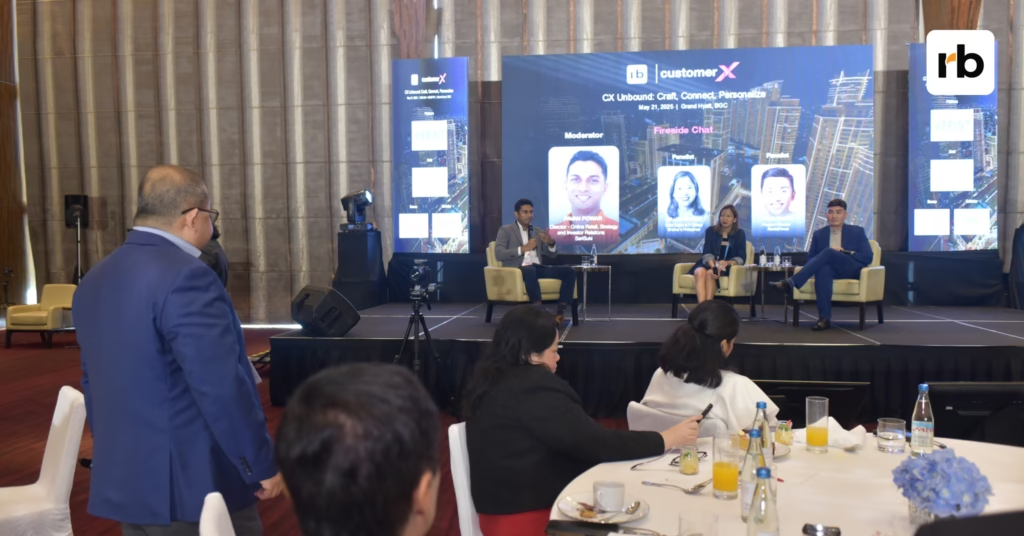By: Zenia Pearl V. Nicolas
In a fireside chat that resonated far beyond metrics and marketing models, Kellda Centenno, Chief Digital & IT Officer of Shakey’s Philippines and Ollie Pangan, Program Director of AboitizPower sparked a dialogue that redefined what loyalty means in today’s emotionally-driven consumer landscape.
The Core Question: Are We Invoking Emotions—or Just Delivering Features?
Kellda opened the floor with a crucial reflection: “If you’re delivering a functional promise, what kind of emotion are you actually giving your customers—satisfaction or frustration?” This set the tone for a discussion that delved into how brands must move from transactional to transformational.
Ollie followed with a bold truth:
“We have to stop pretending that loyalty works the way it used to – IT DOESN’T”.
Backed by data, Ollie noted that 70% of loyalty programs fail, and those who redeem the most are often the first to walk away. Why? Because most programs are built on points—not people.
From Points to People: Designing Loyalty That Honors the Filipino Consumer
As the conversation deepened, Ollie highlighted a cultural truth often missed in loyalty program designs:
“Filipinos don’t necessarily want more rewards – they want to be understood.”
This emotional insight cut straight to the heart of the discussion. Loyalty, in the Philippine market, isn’t built on gimmicks or games. It’s built on genuine recognition.
Ollie continued:
“Stop designing points. Start designing people.”
It’s no longer enough to reward customers for purchases. The most effective loyalty programs today are those that:
- Give meaningful feedback loops
- Drive real brand engagement
- And most importantly, honor and recognize people—not just because they bought something—but because they chose to connect with you.
This shift from transactional mechanics to human-centered design is what makes the difference between a program that fades and a brand that stays.
Kellda shared how Shakey’s Supercard program transcends simple rewards by reducing friction, personalizing communication, and making frequent guests feel genuinely valued.
“It’s that feeling of: ‘Oh, thank you for thanking us,” she shared.
These emotional gestures translate to increased spend, repeat visits, and deeper loyalty—not because of discounts, but because customers feel seen and celebrated.
Loyalty as Behavior, Not Transaction
Ollie challenged the audience to reconsider what loyalty truly is:
“It’s not transactional – it’s behavioral.”
During the Q&A, a delegate asked: “What should companies consider if they’re just starting to embark on a loyalty program?”
Kellda answered with grounded, strategic advice:
“Think about what you want to reward – frequency of visits, amount spent, or something else that truly matters to your business. Then you can build your program around that.”
She added that it’s crucial to design around value, not just points, and to understand the real cost behind each element of the program.
Then Ollie followed up with a deeper, more personal reflection—one that shifted the conversation entirely.
“What’s loyalty to you? Define loyalty. Who do you want to be loyal to you?”
He encouraged brands to go beyond the usual tactics and take a long, honest look at their own identity:
- What kind of product are you putting into the market?
- What kind of experience are you offering?
- Why should someone stick with you—not just in good times, but through the ups and downs?
“You’re not just asking people to be loyal — you need to be worth staying loyal to,” he said.
In a world full of options, loyalty becomes less about perks and more about purpose.
It’s about being a brand that people can rely on—through thick and thin.
Key Takeaways that are worthy to remember:
- Loyalty isn’t just about retention—it’s about recognition and relevance.
- Ditch the points system if it doesn’t serve your customer emotionally.
- Programs that combine functionality with empathy will outlast any discount model.
- Value is not always about price—it’s about meaning, memories, and moments.
In a world chasing conversions, this chat was a reminder to chase connections.
In today’s fast-paced world, where metrics often matter more than meaning and conversations are chased like trophies, this conversation grounded us in something deeper—something timeless. It reminded us that loyalty is not a transaction. It’s a relationship. It’s built not on points or perks, but on presence, on purpose, and on the promise that you’ll still be there—not just when it’s easy, but especially when it’s hard.
So as we all work to build better brands, may we remember: the real win isn’t just gaining attention. It’s earning affection. It’s being the brand that feels like home, where people return, not because of discounts, but because they feel seen, heard, and valued.
Because in the end, people won’t remember the price they paid. They’ll remember how you made them feel.
Let’s stop chasing just conversations—and start choosing connections.

















